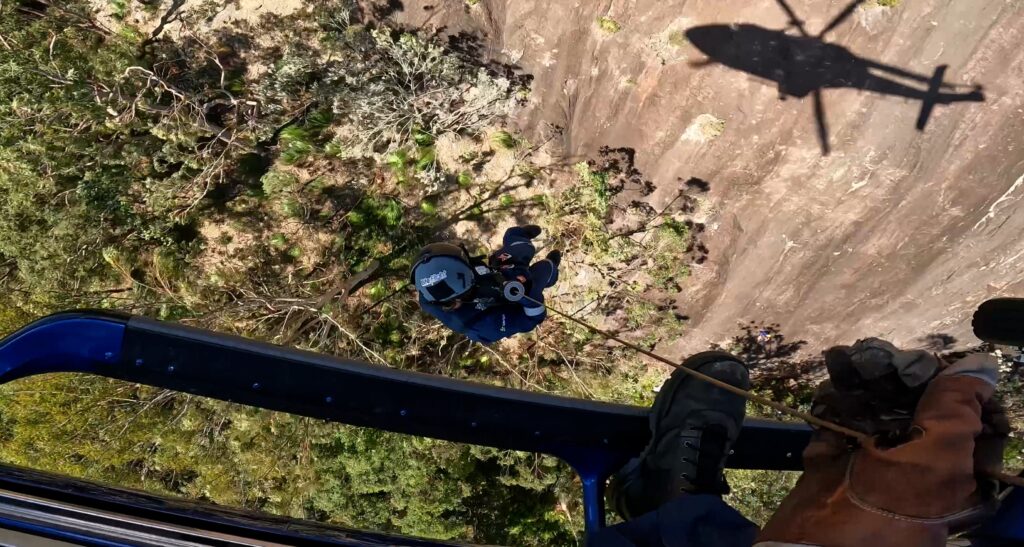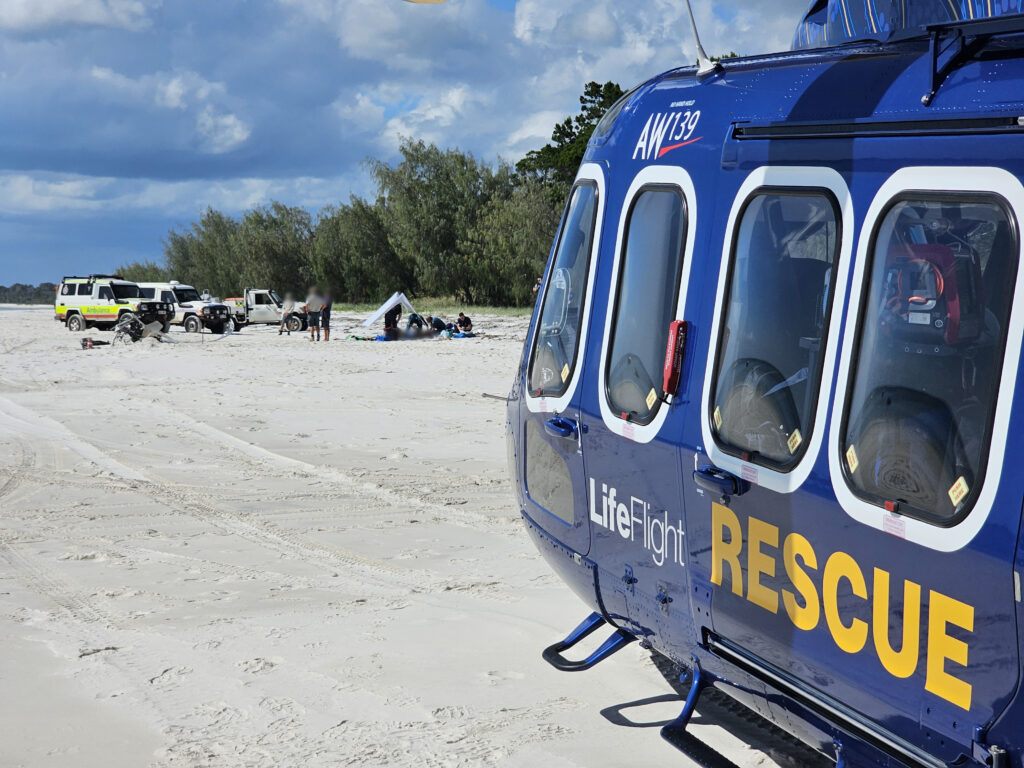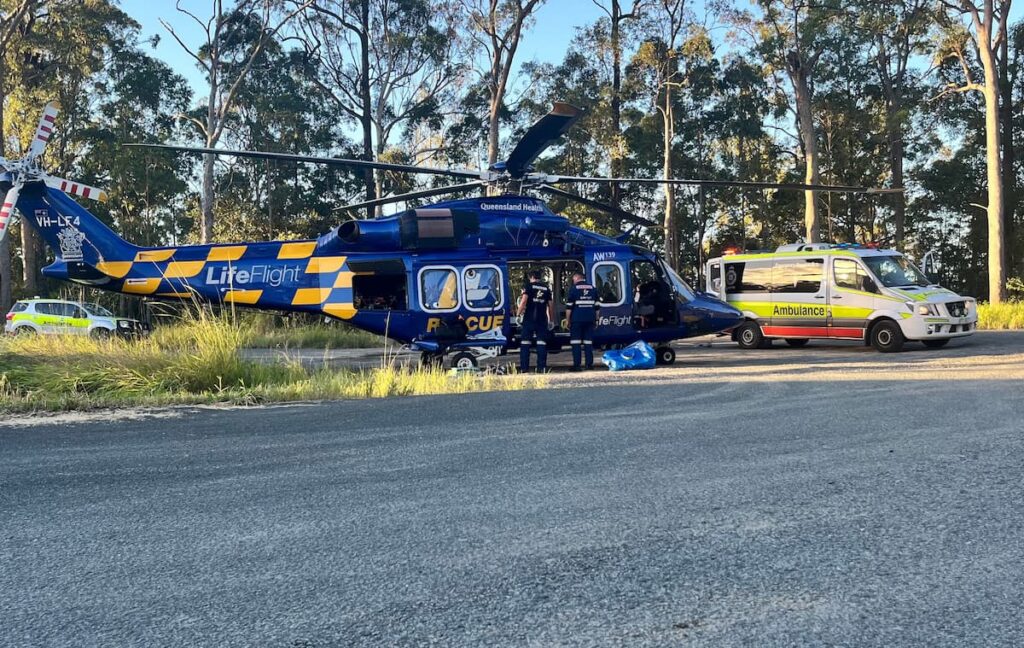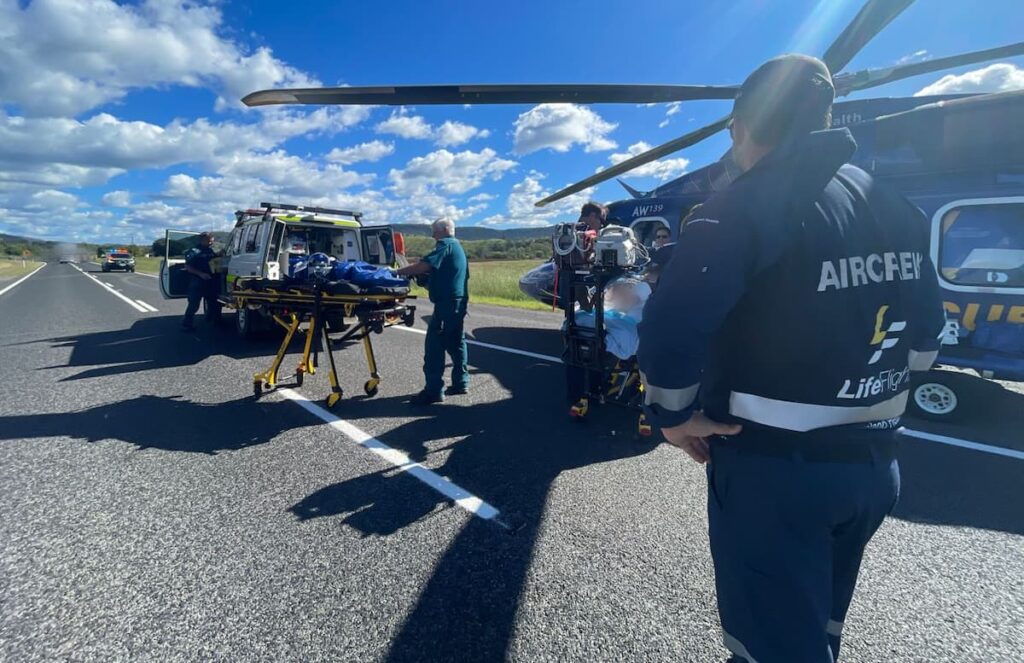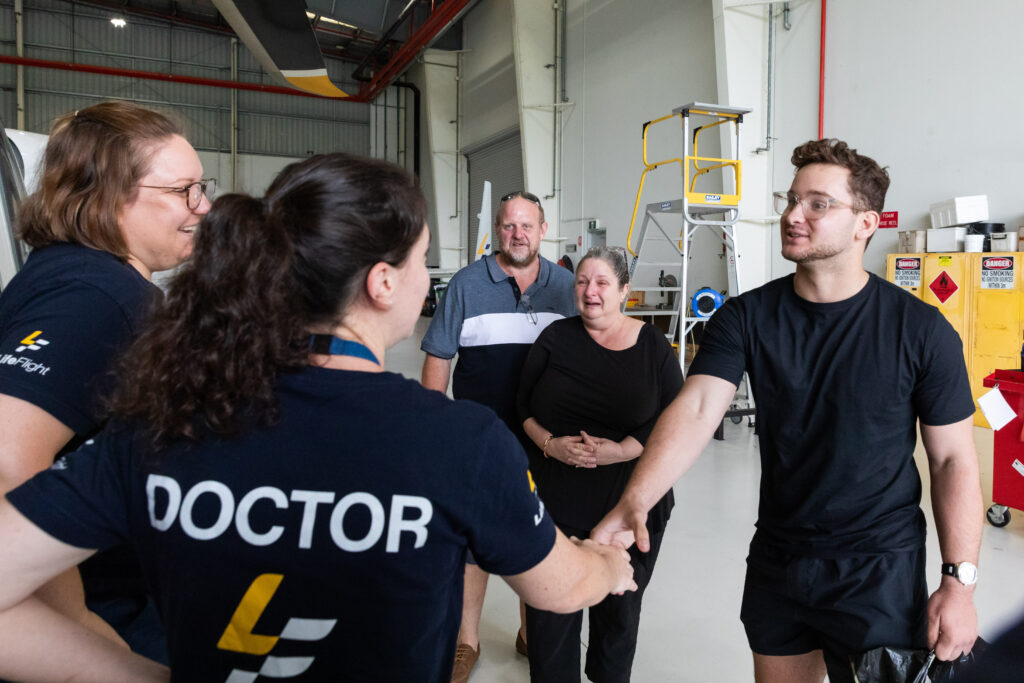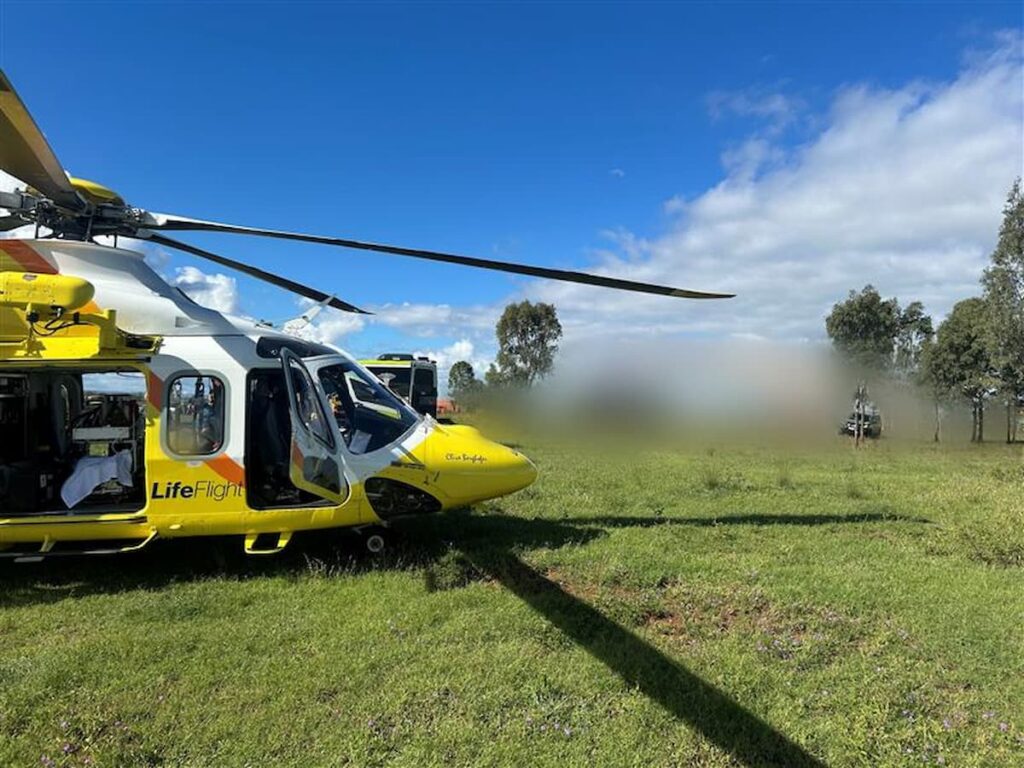Townsville’s military and civilian emergency personnel have combined their unique skill sets in one of the largest mass casualty training events to have ever been held in North Queensland.
Featuring explosions, smoke, crashed vehicles, aircraft overhead and around 100 soldiers and emergency personnel on the ground, crews were put under the pump, to be as prepared as possible, if disaster strikes.
“The mock scenario is designed to build on lessons learned from past mass casualty events that have happened in this region, so we planned an event that occurs within the backdrop of an impending Category 5 cyclone disaster and features a high degree of realism, with special effects, role players and moulage,” LifeFlight Retrieval Medicine’s Director of Northern Operations and event organiser Dr Ben Butson said.
The complex exercise was led by LifeFlight, with high level support from the Australian Defence Force – in particular the Townsville Based 3rd Brigade.
It also incorporated the many other services that work tirelessly to keep North Queenslanders safe – including Queensland Ambulance Service, Queensland Police Service, Queensland Fire and Emergency Service, the Royal Flying Doctor Service, Queensland Government Air, State Emergency Services and Retrieval Services Queensland.
“What we’re trying to do in an exercise like this is trying to become more comfortable with being uncomfortable and more familiar with the chaotic nature of mass casualty events,” LifeFlight’s Dr Butson said.
Dr Butson, who is also an RACQ LifeFlight Rescue Critical Care Doctor, said the training was timed to enhance the relationship between military and civilian agencies, as the region moves into the high risk weather season.
“The ability to get all the emergency services together like this and exercise with the Australian Defence Force as well is vanishingly rare – I can’t think of a time something of quite this scale has happened in the past.”
Senior ADF Officer Townsville, Brigadier Kahlil Fegan, DSC, said the importance of these types of multi-agency, civilian and military training activities cannot be understated.
“They expand the interoperability of all agencies involved, and set up a positive working relationship that serves us so well when we are called upon to serve the community shoulder to shoulder,” BRIG Fegan said.
“The exercise will further improve Army’s already excellent integration with civilian agencies and, importantly for us, test engineering capabilities in preparation for the high risk weather season (HRWS),” BRIG Fegan said.
“What we learn from each other, and importantly the relationships we build in these types of exercises are of a value far greater than individual training and pays dividends in times of crisis.”
The large-scale event gained strong support from Cubic Defence Australia, who generously provided cutting-edge North Queensland-based technology for the scenario.
“We’re really proud that our support and expertise helped to create a realistic emergency scenario so that emergency response agencies, and Defence, can hone their skills to the benefit of the North Queensland community,” Cubic Defence Australia’s Director Strategic Development Mark Horn said.
LifeFlight’s Dr Ben Butson said Cubic was an essential player in making this event come to life.
“We are very fortunate they identified the importance of this training to the local community,” Dr Butson said.





